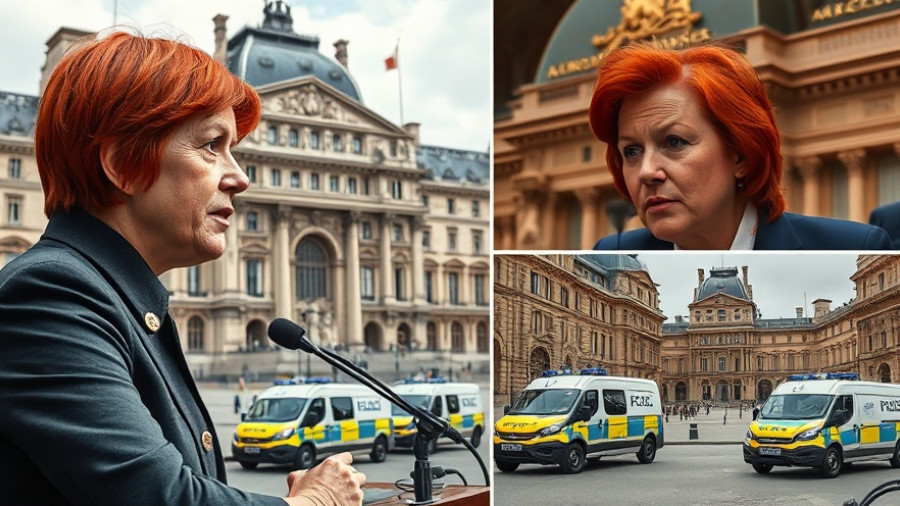
The Shocking Heist: A Daylight Robbery at the Louvre
On October 19, 2025, in an audacious display of criminal expertise, a group of thieves executed a planned raid on the Louvre Museum, making away with priceless crown jewels valued at an astounding $102 million. The incident took place in the iconic Apollo Gallery and was remarkably executed in under eight minutes. This brazen theft has sent shockwaves throughout the art and jewelry world, raising concerns about security and theft prevention in one of the most visited museums globally.
Arrests Made: Connecting the Dots
Following the theft, authorities have made significant strides in the ongoing investigation. Recently, five more individuals were apprehended in the Paris area, reportedly in connection with the heist. Paris prosecutor Laure Beccuau, who has been meticulous in the investigation, shared details that one of the arrested suspects is believed to have played a role in the robbery itself, indicating a more extensive network behind the crime.
The urgency of these arrests highlights the organized nature of the crime, echoing concerns similar to those around other high-profile art thefts. As two suspects admitted partial involvement Sunday, the potential for collaboration among criminals is increasingly suspicious. What has been particularly troubling is the apparent lack of leads regarding the stolen jewels, prompting a pressing question: how can such valuable items go missing without a trace?
Lessons for Museums: Safety Insights
As news of the Louvre heist travels worldwide, it's an essential moment for museums everywhere to evaluate their security protocols. Unlike art galleries that may operate under less stringent measures, the Louvre stands as a testament to a strategic need for enhanced security measures. After all, if thieves can break in and out so swiftly, it raises the stakes for curators and museum directors to take immediate action.
From investing in cutting-edge surveillance technology to comprehensive background checks on all personnel, the implications of this robbery transcend just the theft at hand. Targeting such institutions can yield rewards, thus necessitating innovation in security practices. Implementing thorough security drills, routine audits by security professionals, and collaborating with local law enforcement can significantly reduce future risks.
Business Impact: Vulnerability in the Arts Sector
The aftermath of the Louvre robbery isn't felt solely in terms of museum security. Local businesses connected to the arts and tourism sectors need to contemplate the ramifications as well. The Louvre, drawing millions of visitors annually, contributes significantly to the economic health of Paris, impacting local restaurants, hotels, and retailers that cater to museum-goers.
As concerns rise about safety in visiting such high-profile cultural institutions, businesses might see a decline in customer traffic, especially if dialogues surrounding theft drain confidence. However, this can also be an opportunity for local businesses, particularly in the Kansas City area, to engage creatively with arts and culture in their campaigns—reinforcing trust in local attractions and emphasizing the safety and community pride associated with their services.
Final Thoughts: Community Resilience and Action
The fallout from the Louvre jewel heist offers crucial lessons not only for international art institutions but also serves as a reflection for local businesses and the community at large. Engaging conversations about security and community resilience are vital. As we navigate these discussions, it's vital to remember how cultural heritage connects us and the shared responsibility we hold to protect it.
Have a story to share or want to contact us for more details? Drop us an email at team@kansascitythrive.com.
 Add Row
Add Row  Add
Add 





Write A Comment